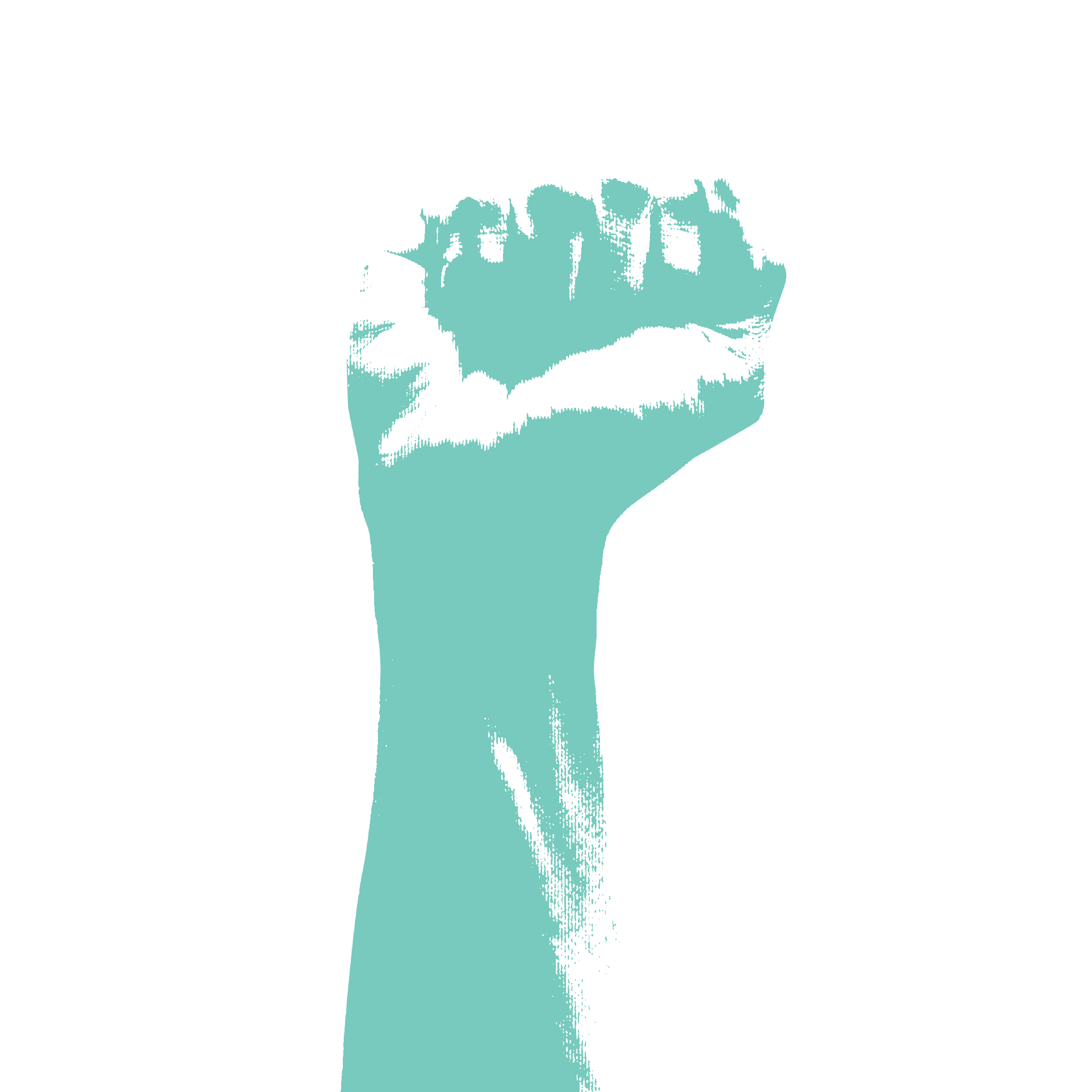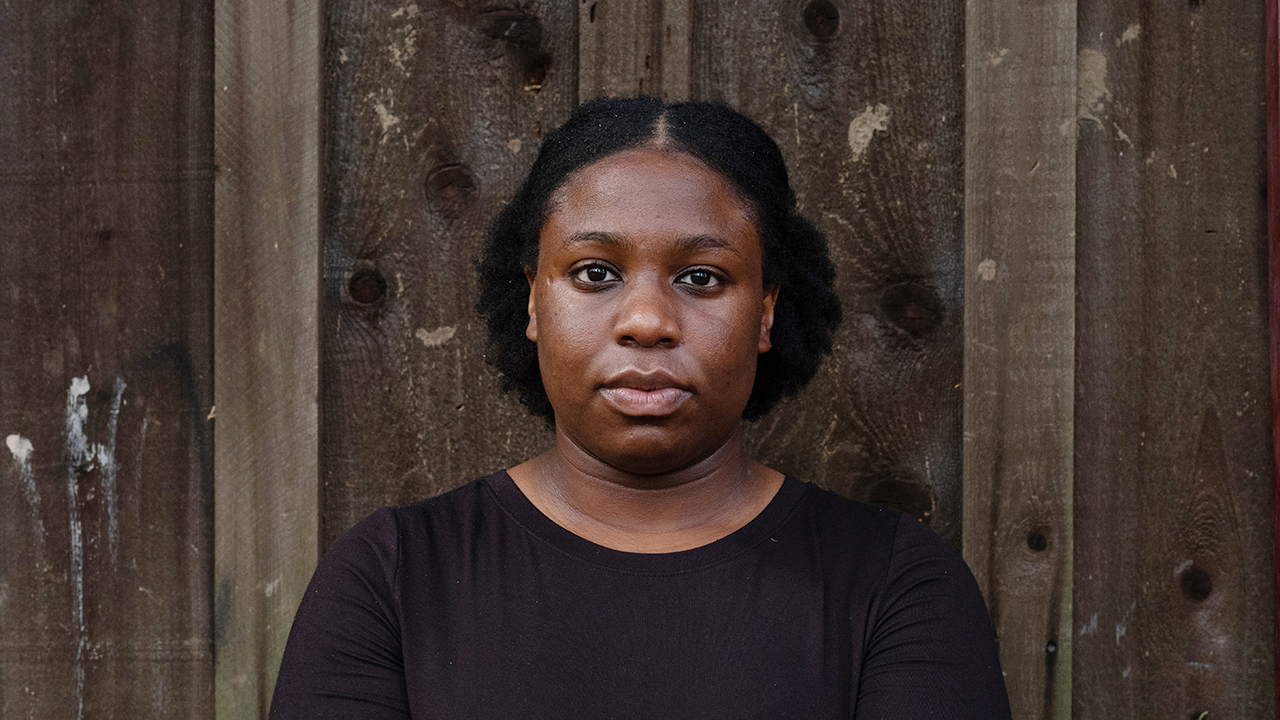
On June 5th last year, the town of Vidor in East Texas, home to 11,000 people, awoke in a nervous sweat. It was a hot summer and waves of anger and indignation were rippling across the country after George Floyd was murdered by a police officer in Minneapolis.
Maddy Malone, a 23-year-old white woman from Vidor, had been attending Black Lives Matter protests in nearby towns and wanted to organise one in her own community. She called Yalakesen Baaheth, a black friend who lived in Port Arthur, a more racially diverse city nearby. We need to do something, said Malone. Would Baaheth help her organise a march? Baaheth’s initial enthusiasm dwindled when she learned precisely where Malone wanted to hold it. “Oh Vidor?” she replied. “That might be a problem.”
In this part of Texas, Vidor is notorious for being a former haven for the Ku Klux Klan. Some 98% of the population is white (compared with 79% in the entire state of Texas). For generations, black people warned each other not to stop there even to buy petrol. Many knew the stories of the few black people who’d been run out of town after trying to settle there. In 1993 a cover story in Texas Monthly labelled Vidor “Texas’ most hate-filled town”.
Baaheth had grown up in a conservative family that believed they should trust God alone to fight their battles. “But if we don’t do this, then we’re not giving the people in Vidor the chance to show their support,” she thought. Worried that participating might endanger her job, Baaheth asked her boss at Chick-fil-A, a fast-food chain, if she could attend. Then she agreed to help.
Malone and Baaheth posted a call on social media for a “Peace March in Vidor” in memory of George Floyd. Within hours, it had gone viral. Some tweets sounded the alarm: “DO NOT GO TO THE PROTEST IF YOU ARE BLACK! It is a stronghold for the kkk [sic]! DO NOT GO!” urged one woman. A few even thought the event was a pretext to lure black people to their deaths. “This is not a protest but a lynching disguised as one,” implored another post.
Some Vidorians couldn’t see any reason to protest. “We have all races that live here and there is no problem,” wrote a woman in one of Vidor’s Facebook groups. “Stop making us a point in someone else’s agenda for trouble.” When people cried “Black lives matter”, many conservative townsfolk heard calls for defunding the police, abortion on demand and outright socialism. They wanted no part of it.
In 1993 Texas Monthly labelled Vidor 'Texas’ most hate-filled town'
Malone had also grown up in a devout family. It was understood that she must date only white men. She reckoned that she was allowed to become friends with Baaheth because Malone’s family regarded her as a “good Christian” (they met through church). As Malone’s circle of friends expanded to include people of other races in other cities, she quickly became tired of hearing them worry about coming to Vidor (she once had to convince a black friend from Houston that he wouldn’t get shot if he visited her).
“Whenever I would tell people I’m from Vidor, people would automatically associate me with being racist,” she said. The march was a chance to show people of colour that they would be safe in her town.
Alongside messages of support, Malone also received abuse. She was called a “n----r lover” and an attention-seeker. A former co-worker asked, “Why are you bringing this to our town?” Some of her social-media accounts were hacked. Agitators threatened on Twitter to turn up at the protest and “shoot y’all up”. Organisers heard rumours from law-enforcement sources that a panoply of groups was planning to descend on Vidor: white-supremacist gangs; the Black Panthers, a black-nationalist organisation; Antifa, an anti-fascist political movement; and those merely in search of a riot.
This wouldn’t be the first time in the town’s history when a reckoning with race drew outside partisans. Vidor braced itself.
On the day of the march Malone woke up worrying that rioters might disrupt proceedings. Rod Carroll, the town’s police chief, prayed before he left home that nothing would happen to further besmirch the town’s image.
A former co-worker asked, 'Why are you bringing this to our town?'
DeVon Noe, who is 25 years old, was the only black resident of Vidor to speak at the march. He had bought a new outfit for the occasion: a sleeveless hoodie and teal shorts that almost matched his jutting outcrop of dyed-blue hair.
At 3pm, under the searing sun in Raymond Gould Park, a crowd of some 200 people gathered, most of them white. Malone’s tank-top read “LOVE MORE LOVE”. A black woman wore a t-shirt bearing the date “1619”, the year slaves first arrived in Virginia. White Vidorians in military vests, armed with semi-automatic rifles and pistols, clustered by a nearby war memorial, insisting that they were there simply to protect it. Someone had hung a sign on a footbridge: “Vidor kneels to no one but God”.
To her surprise, Malone spotted her grandfather in the crowd. She later found out that he’d come, armed with a pistol, only to protect her in the event of violence. He heard her declare that they had gathered “together in love and unity and to bind together under God.” Malone said that her “generation was reaching to break the cycle” of racism. Occasionally trucks with a Confederate flag would circle through the car park.
Noe felt sick as Malone handed him the microphone. He introduced himself as Vidor’s “resident gay black guy” and told the crowd that, despite having been assailed by hurled bottles and assaulted by angry drivers, he knew that “Vidor is a very damn good place.” Noe was too nervous to finish his speech.
Together the protesters made a few laps of the park, chanting slogans for justice. They intoned a well-known roll-call of black civilians killed by police: Breonna Taylor, Freddie Gray, Anthony Hill. One name, which had not achieved national renown, stood out: Matt Thomas.
Ten years earlier, Thomas had been a popular footballer at Vidor High School. Then he was found dead on the railway tracks. At the time the authorities deemed his death a tragic accident. His friends believed there was a more sinister explanation. Some hoped that this summer of reflection on race might prompt his case to be reopened.
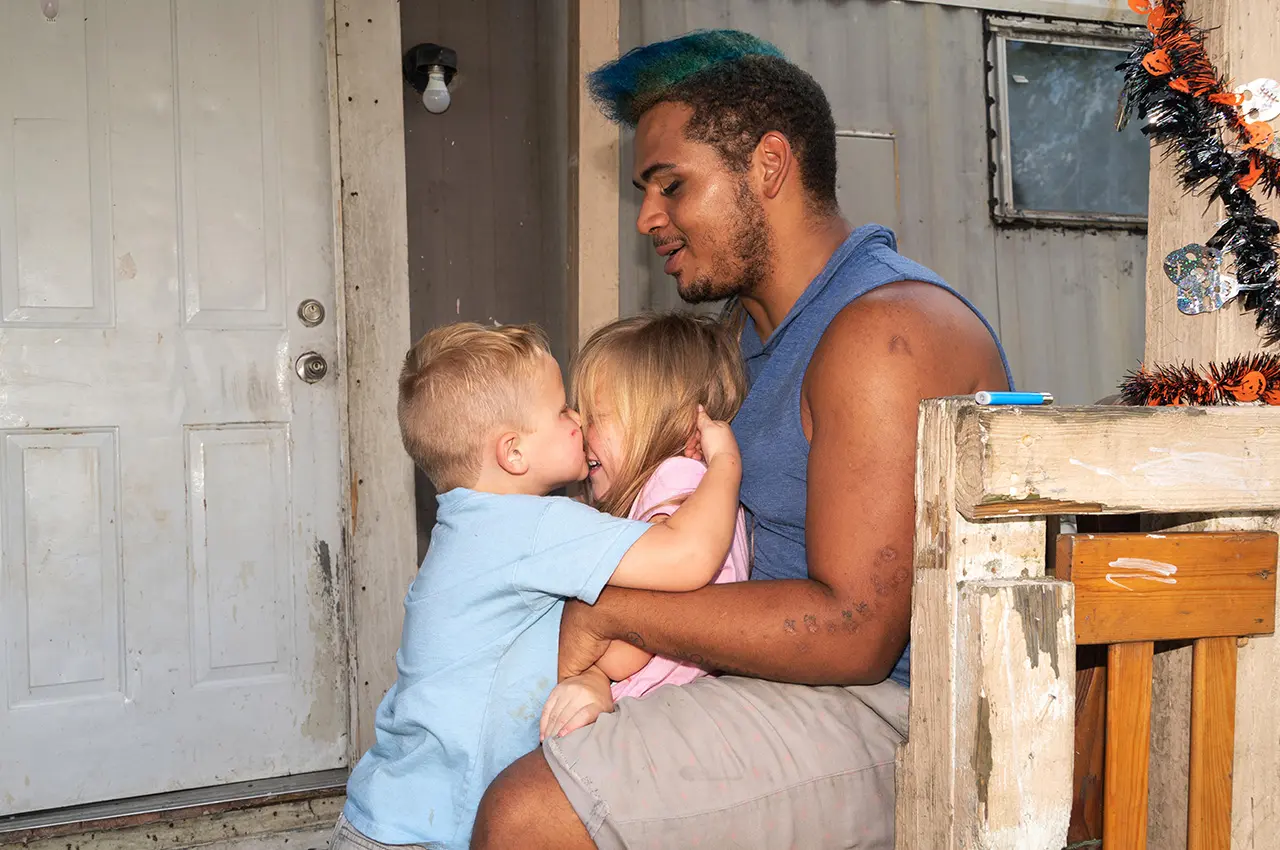
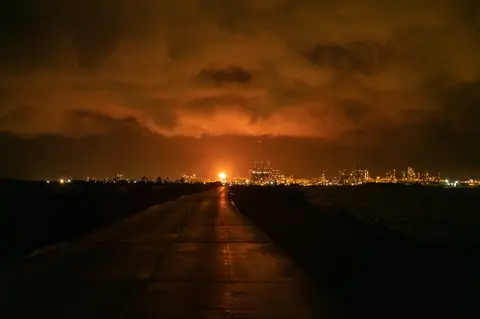
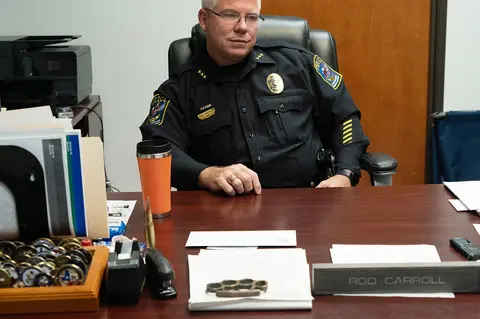
A livestream of the Black Lives Matter demonstration in Vidor was broadcast. “Pigs are flying, and it’s snowing in hell,” tweeted one woman. Jared Hollier, a pastor at one of Vidor’s churches, watched with relief at home. He recalled how many Vidorians felt as the march passed off peacefully: “We did it. Good for us. Now let’s go back to work on Monday morning.” And so a city where almost everyone is white went back to believing that it no longer had a problem with racism.
Well, almost everyone. When Malone got home, her grandfather told her she needed to pack her bags and leave. A week later, Noe received a phone call from someone who lived near his old house. She had found a dead rabbit on its doorstep.
Vidor lies 130km east of Houston. It’s a town of strip malls, faded storefronts and a remarkable number of churches (over three dozen at the last count). Spacious brick bungalows with neatly mowed lawns dominate the middle-class neighbourhoods. Deeper into the backwoods, scraggy lots are dotted with trailer homes and small wooden houses. Vines hang like curtains from power lines. Piles of tyres, discarded appliances and other detritus stand like monuments to indigence and the frequent hurricanes. One in five Vidorians lives below the poverty line.
This is a town where many like to broadcast their views. As I drove there in October 2020 I saw two billboards near the highway. “Wake up!! Vote Trump”, the one on the left read. To its right: “All lives matter – Not just black lives – My daughter’s life mattered”. For 30 years a bereaved father has put up posters accusing police of bungling the investigation into his daughter’s murder (he inspired the Oscar-winning film “Three Billboards Outside Ebbing, Missouri”). Leave town on Farm Road 105 and there’s an image of a fetus, posted by anti-abortion activists.
The sign that has most defined the reputation of Vidor no longer exists. There are differing recollections about when this sign was displayed. One resident remembers seeing it in the 1950s. The editor of Vidor’s newspaper reckons that if it existed – a fact he is sceptical about – it would have been in the 1930s or 1940s. I met one black man who swore he had seen several distinct but identical signs as recently as the 1990s. The chronology may be in dispute but they agree on the slogan: “N----r, don’t let the sun go down on you”.
Vidor was not unique in having such a sign. It was one of hundreds of communities across America known as “sundown towns”, which stopped black people settling in them through ordinances that prohibited them from staying after dark or renting property – and through intimidation and violence. Reputation was often as powerful as any symbol or by-law: black people knew they weren’t welcome.
During my three weeks in Vidor I could find no documentary evidence that this sign existed. That is “totally normal”, according to James Loewen, a sociologist and author of a book on sundown towns. He has combed the histories of hundreds of these towns but found only one photograph of such a sign. They became part of a city’s landscape, he says – no more assuming than a Rotary Club banner – and therefore weren’t worth snapping. Their memory is preserved largely in oral histories.
Someone had hung a sign on a footbridge: 'Vidor kneels to no one but God'
Vidor began its existence as a logging camp in the early 20th century. At the time this stretch of East Texas was filled with forests and swamps; the air was thick with mosquitoes and alligators stalked the cypress trees. Only lumberjacks and bootleggers were willing to live there. It got its name from Charles Vidor, a local timber baron (his son King Vidor became a celebrated film director and shot the first Hollywood picture with an all-black cast in 1929). Klan legend has it that “the ol’ man that helped found this town did not allow a n----r around here.”
Such views were common at the time. By 1860, just before the American civil war, a third of Texas’s population – more than 180,000 black people – was enslaved, mostly on cotton and sugar plantations. Even after the South was defeated, oppression and violence against black people persisted across Texas. The Southern Poverty Law Centre, a civil-rights organisation, documented seven different kkk groups operating in and around Vidor until at least the 1950s.
Much of the history of Vidor in the first half of the 20th century is anecdotal, with stories of Klan night-riders assaulting or killing black people, and driving them out of town. There is a record of at least one horrifying incident. An oral-history project gathered testimony about a black man accused of rape who was lynched by the Vidor kkk around 1930. A crowd watched as Klan members cut off the man’s genitals and nailed them to a sign around his neck that read, “N----rs, don’t let the sun set on you in Vidor!”
Joyce Dennis was born in Vidor in 1941 and says she came to understand why she saw no black people there: “If one would try to move in they would move them out. And if they didn’t leave, they’d kill ’em,” she said. She remembers her father pointing out nooses hanging from a tree: black people had been hanged there, he explained to his young daughter.
Vidor grew from the 1960s onwards as desegregation in neighbouring Beaumont sparked racial strife and prompted white flight to Vidor. Incomers regarded Vidor as a peaceful community with good schools and solid jobs in the surrounding oil refineries and steel mills. Yet it also became known as a “hotbed of whatever Klan activities there are in Texas”, as a newspaper article put it in 1971.
The Klan made no attempt to conceal its activities. Members met for coffee in Gary’s Café and opened a bookshop on Main Street in 1974. Black shoppers and workers were attacked. When the Klan held a rally that spring, the Associated Press reported that “The women sold cakes, everyone listened to speeches, and the men burned the cross.” A Klan member even stood for office in the 1980s, though he was defeated by four to one.
Vidor struggled to shake off its notoriety. By 1983 Vidor was no longer a kkk stronghold, according to an article from the Associated Press, yet that impression has persisted: “Community leaders bemoan the image as unfair and harmful but seem unable – or unwilling – to really challenge it.” Some Vidorians found the city’s infamy useful: it dissuaded black people from moving in.
In 1992 Vidor was given an opportunity to prove that it had changed. A federal judge ordered 170 public-housing projects across Texas to be desegregated. Open applications were encouraged and housing units were reserved specifically for black people. If they failed to desegregate, government funding would be cut off.
Vidor faced an unusual obstacle to compliance: it had no black residents in public housing. The city needed to attract black people but, quite reasonably, none wanted to move there. According to Texas Monthly, 1,300 black people on public-housing waiting lists in the area were invited to move to Vidor. None accepted.
Far-right activists in Texas saw Vidor as their last redoubt, one of the few places untouched by the dismantling of the Jim Crow laws that had once enforced racial separation. The kkk believed that campaigning against desegregation would rejuvenate the dying organisation. KKK chapters in Texan towns such as Waco and Cleveland descended on Vidor. Together with the city’s remaining Klansmen, they held rallies, distributed racist literature, burned crosses and hung a banner from the interstate overpass that read, “Vidor White Power”. They even organised a Christmas sale at a local petrol station that included a visit from Klana Klaus.
To execute the desegregation plan, the authorities had to extend their search. They eventually found a couple of black men to move in and two women – one with two daughters and one with three – from neighbouring Louisiana. When the women pulled into a petrol station, the attendant was polite but told them: “You shouldn’t be here.”
They soon learned what he meant. The Klan began patrolling the housing complex, dressed in full regalia and brandishing guns. Though most Klansmen came from outside Vidor, the demonstrations boosted membership in the city (a Klan member told a reporter that the local chapter had anywhere from 40 to 200 members).
White nationalists from other states threatened to sue the city if they were refused permission to protest. Klan members offered children $50 to beat up their black neighbours. Men would holler at the two black women, telling them what they’d do if they found them outside after dark; the two black men received death threats. A Klan member from Mauriceville, just down the road, threatened to blow up the housing complex with explosives. Authorities posted a 24-hour guard.
A city where almost everyone is white went back to believing that it no longer had a problem with racism
Not everyone in Vidor was so hostile. The Central Baptist Church offered the newcomers help. Vidor’s mayor publicly welcomed them and decried media outlets for giving the Klan publicity (she received threatening phone calls and an attempt to evict her from office). Eighteen white residents of the housing complex held a welcome party for the newcomers; others tried to protect their black neighbours, despite death threats.
The main opposition to the Klan was organised by pastors: 17 church congregations participated in a series of prayer rallies across the town (one drew as many as 2,000 people). They didn’t explicitly confront the Klan but urged participants to “pray for our city and the future of our city”.
Black residents were not reassured. After 16 days, the women fled with their children, as did some white Vidorians who’d helped them. Bill Simpson, a homeless man rehoused in the complex, held out for six months. (On his first night back in Beaumont, he was shot dead in a robbery.)
The inescapable conclusion was that Vidor could not be integrated.
Many Vidorians felt that they were pinched between other people’s agendas: the federal government, which wished to make an example of them; the media, intent on shaming the town for its hateful past; and the Klan, which wanted to preserve this racially pure sliver of Texas.
To this day, many townsfolk believe they were painted in the worst possible light. They argue that reporters sought out those with the most extreme views (one woman told cnn that she’d welcome black people as long as she didn’t have to mingle or dine with them). This bruising episode did not force a reckoning. Instead, townsfolk retreated into a defensive crouch: racism wasn’t something that came from Vidor, many white residents believed. It happened to Vidor.
Black people I’ve spoken to who have visited or lived in Vidor since then tend to have a different perspective. Noe was born in Vidor in 1996, four years after the abortive attempt to desegregate the town’s public housing. He moved with his white mother and half-brother to Beaumont to escape his abusive black father. When he was six, his mother had a car crash and died, and Noe and his brother were sent back to Vidor. Their mother’s aunt Bertha and her husband took them in.
Noe learned about racism on his first day at school. Children surrounded him, kicked him to the ground, called him “n----r”. That night, as Bertha bathed him, Noe asked her what the term meant. The abuse continued but Noe had no fiercer protector than Bertha. When a fellow customer at the supermarket commented that the “porch monkey” had left the porch, Bertha hurled a tin of food at the shopper’s head.
At school, he had a survival drill: keep your head down, don’t make eye contact with anyone bigger than you. The bullying persisted. In high school, after Noe and some other students ribbed a classmate about an embarrassing video, Noe found a noose on his desk. He began to resent his own blackness and considered using bleach to lighten his complexion.
Things got worse when Noe came out as gay. Even his great-uncle – “God rest his a--hole’s soul” – said, “You’re not making this easy for you.” As a teenager, other pupils assaulted him in the school toilets, urinating on him and calling him a “f---ot n----r”. He was constantly insulted, and beaten almost every month. Noe told the school administrator three times about the abuse and was ignored. He began to use purple eye-shadow to disguise the bruises.
“I was dealt three strikes: I’m black, I’m mixed, I’ve lived in Vidor. Hold on – home run – I’m also gay,” Noe told me last autumn. “It sucks but I would not rather bear any other cross.”
The Black Lives Matter march in June 2020 perplexed many white Vidorians who didn’t see themselves as racist. “What was the point of having a peace rally in a peaceful town?” one citizen asked me. Some worried that, like the desegregation showdown, it would draw outsiders pushing their own agendas.
In recent decades Vidor has tried to change people’s perception of it. In the 1990s the owner of a local Tex-Mex restaurant, the son of a Mexican, proposed a “Thumbs Up, Vidor” campaign to bring businesses, schools and churches together to promote civic pride. T-shirts with enthusiastic slogans were printed and thousands of people came together at rallies in the name of unity. In the 2000s a billboard advertising the town to prospective residents included a photo of a black girl.
The high-school American-football team, the Vidor Pirates, is the city’s greatest source of civic pride. Jeff Matthews, its coach since the early 1990s, sees his players as unofficial ambassadors for a more harmonious Vidor. Some football teams have refused to play Vidor. Aware of this notoriety, Matthews says the school’s athletes make a point of sitting with their black counterparts. When the Pirates play teams with black players, both sides gather in a circle after the game to hold hands and pray together.
Though Vidor’s official leadership has not made a collective effort to deal with the legacy of racism, many residents feel that the city has changed since the desegregation battle. There are more non-white students in Vidor’s schools than ever before. Yet even in 2019 just 0.4% of pupils were black (in 2000 there were still no black students at all), compared with 13% in Texas overall.
He received a phone call from someone who lived near his old house. She had found a dead rabbit on his doorstep
Several Vidorians mention the town’s Walmart – and the presence of black shoppers and workers there – as a barometer of shifting race relations. Five years ago there were no black workers, says Malone. I was repeatedly told by young Vidorians that they and their peers speak up if they hear racial slurs; their parents would have kept silent.
But many people in Vidor are angry that outsiders continue to typecast the town. Perhaps no one more so than Randall Luker, publisher of the Vidorian, the town’s paper of record. When I entered the one-person newsroom, he emerged from behind a large desk overflowing with the paraphernalia of newspaper production. He was tall, with a long face, a grey beard and a drawl as smooth as honey. His black t-shirt bore an illustration of an automatic rifle imprinted across the American flag – an advert for Black Rifle Coffee, a brand that supports veterans and the right to bear arms. As we spoke, I could feel him sizing me up, trying to work out whether I was yet another journalist coming to malign Vidor.
Luker thinks that Vidor’s reputation is undeserved. He isn’t sure if the sundown sign had ever existed: he has lived in the town since he was six and met only one person who claims to have seen it. Hundreds of other towns had similar histories, he says, and they weren’t tarred as viciously as Vidor.
He was outraged by stories online that Vidor was still running black people out of town. These were just fables: “You Google ‘Vidor’ and you look at all the garbage that comes up.” Matthews, the football coach, also feels infuriated. He can remember only one Klan rally in his time in Vidor and has never met a Klan member. He becomes vexed at stories of his team playing football in the 1990s against a background of burning crosses or cheering Klansmen.
Vidor’s lack of interest in its own past has made it harder to distinguish fact from apocrypha. I went to the library to seek out material about the town’s history. “So, are you interviewing people to get the good stuff?” the librarian wanted to know. “Everything about our town is great.” All she had to offer were five thin spiral-bound volumes, entitled “Portrait of Vidor”, which contained photos of Vidor’s landmarks and its early inhabitants – matriarchs and patriarchs in their Sunday finest. There was nothing in it about the sundown sign or kkk rallies.
The past was “swept under the rug”, Malone said. One Vidorian who lived there during the desegregation crisis confessed to having no idea why black residents left. She was astonished when I told her that they had been threatened by Klan members toting weapons. A number of Vidorians I spoke to seemed to treat their town’s reputation as though it were divorced from the history that led to it.
The question of the Klan’s persistence throws into relief the different accounts of the town’s history. Matthews believes that the Klan has barely been perceptible for the past 30 years but Noe remembers being told, as a child in the early 2000s, to duck as his family drove past a group of Klan members. When he wrote this on one of the town’s Facebook pages, he was told that he must have misremembered.
Yet I found online announcements of kkk gatherings and exhibitions of regalia held at the community centre from as recently as 2003. People told me of Klan bus parades and recruitment drives over the past 20 years. In 2018 a black manager transferred from out of town to the Vidor Walmart was subjected to death threats (and the Walmart to bomb threats). The employee fled and the police investigation led nowhere. The Vidorian did not cover the story.
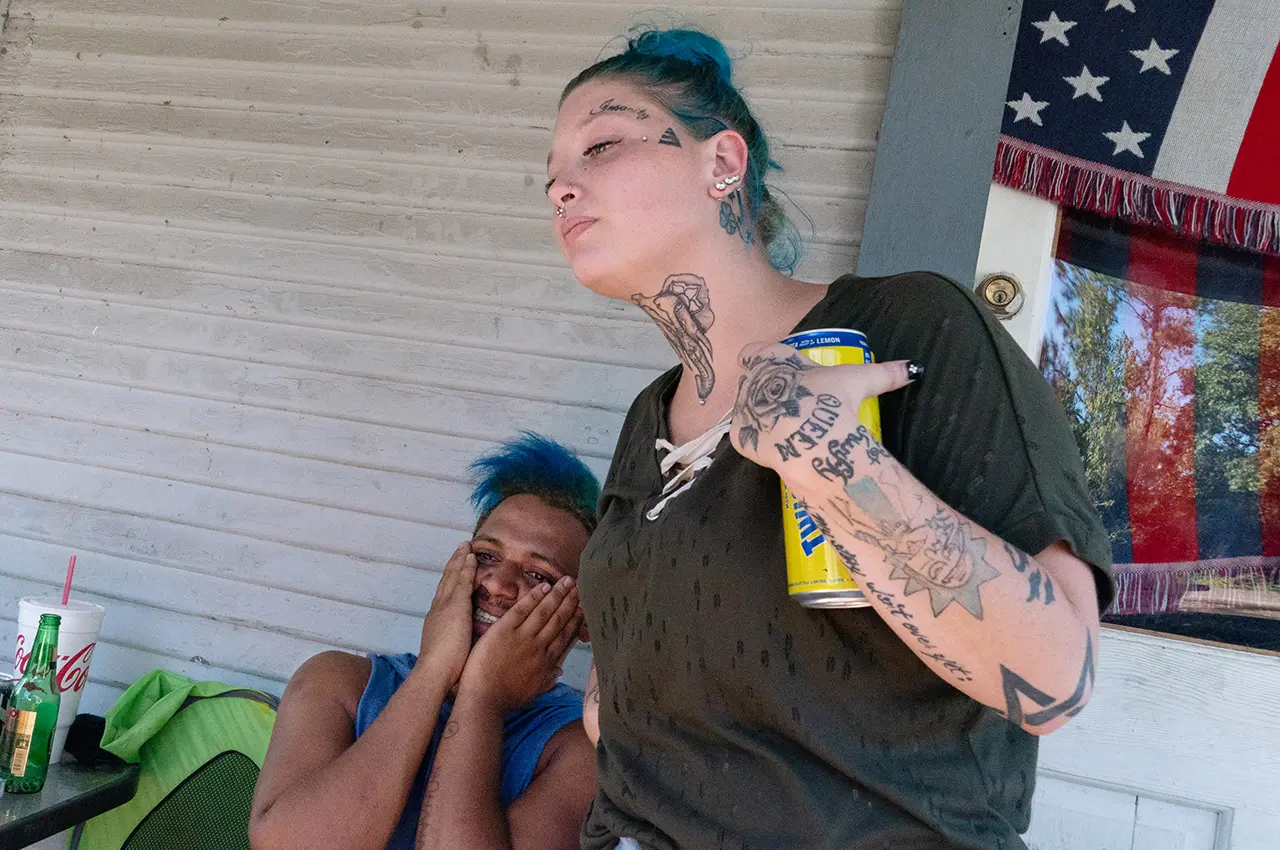
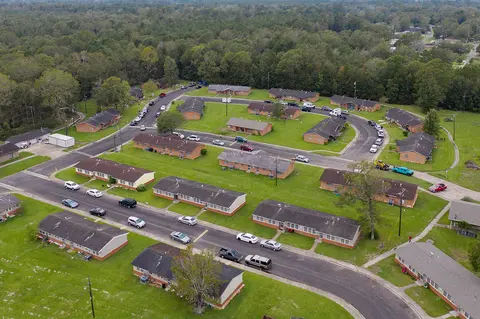
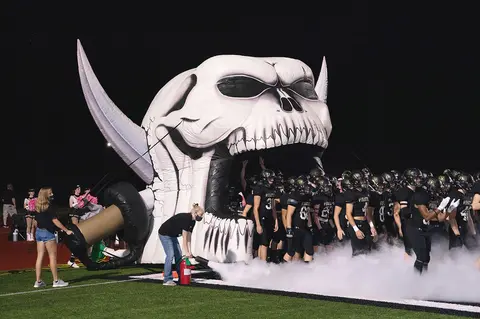
Vidor is still an overwhelmingly white town. According to the census of 2010 only 0.1% of Vidor’s residents were black (Latinos, the biggest minority, comprised 8% of the population and overwhelmingly identify as white). Many Vidorians believe that the absence of black people is not the result of racism. The paucity of black people living in Vidor means that there are few opportunities for racism to manifest itself visibly. Residents overlook or discount outbreaks when they do occur. They simply don’t impinge on most people’s lives.
No one epitomises the way race is capable of being overlooked, minimised or explained away, even when it appears in plain sight, more than a man I met one afternoon at a trailer park. I had gone to visit Noe, who was living off a rutted road in south Vidor with a friend and her two children. The rusty trailer sat on cinder blocks surrounded by puddles. Chunks of mouldy insulation foam hung from its underbelly. In a nearby trailer lived a wiry man with tattoos on his forearms, who wore tiny black half-hooped earrings and overlapping silver chains with big links. “You sure you’re not from the fbi?” he asked me, scratching his thin goatee.
As a teenager, he’d thought it would be funny to burn a cross on his neighbour’s yard when they had black friends over. His joke brought a visit from the fbi. He hadn’t considered his action to be malicious or racist: he’d grown up in an environment where such behaviour was normal.
His grandfather was a card-carrying kkk member and he remembered eating popcorn at rallies and picnics. The first time he saw a black person was aged 12, when his family moved for a year to Jasper, an hour’s drive north of Vidor, where more than half the town is black. He hadn’t realised at the time that the reason kids didn’t like him was because he was from Vidor. He would bring a Bible to school each day to use in self-defence.
On his 18th birthday, he was arrested after robbing the owner of a petrol station, who turned out to be Iranian. He was accused – wrongly, he felt – of being motivated partly by racial animus, and was sent to prison for 13 months. Like many inmates he became a member of a prison gang for his own protection. These are normally organised along racial lines and he joined the Aryan Brotherhood, the most established of the white-supremacist gangs, which the fbi considers a violent neo-Nazi gang. After his release, he covered up the tattoos that displayed his allegiance. He was annoyed when a neighbour in another trailer – a lieutenant in the Aryan Brotherhood – tried to pull the organisation’s handshake on him.
The Aryan Brotherhood has a notable presence in Vidor, though some people in the town, including the police chief, simply see its members as ex-cons compelled to adopt unpalatable views when in jail, rather than as evidence that racism persists. Noe is more conscious of their danger.
The trailer he lives in is a mile from a fenced-off plot that locals call the Compound, long known as an area where associates of white-supremacist gangs like the Aryan Brotherhood and the Solid Wood Soldiers live and cook methamphetamines to sell. On one occasion, I was discussing the Compound with Noe in a diner. When he realised that two of its inhabitants were sitting in a booth nearby and seemed to be listening to our conversation, he got up to leave. That night he slept elsewhere.
The women sold cakes, everyone listened to speeches, and the men burned the cross
Noe’s neighbour seemed both to tolerate racism and deny its existence. He felt that black people were safer than him and more likely to get jobs (without seeing any contradiction, he also felt the urge to warn Noe to be careful when walking around Vidor). He couldn’t see why there was any need for black people to riot – they were as free as anyone else. If things were so terrible, they could leave. “If they’d like to go back to Africa, they can,” he said. “I should say, I’m not racist – I’m really not – not even to this day, not after everything I’ve been through.” He stopped himself, took off his cap, scratched his head and patted down his thin hair, “But a lot of it was my fault too. You know, I was young and dumb.”
Jared Hollier, the pastor of Pecan Acres Baptist Church, has perhaps the clearest view of Vidor’s conflicts and blindspots. A 36-year-old Vidor native with dark-blond hair and beard, he lived in more racially diverse towns in Texas for years before returning home. This seemed to give him some perspective on Vidor’s dilemma. “People hate having the reputation, but I don’t know that people are willing to admit that in a lot of ways, we – individuals – still have those latent beliefs.”
The town has become so strongly identified with racism that it is reluctant to recognise discrimination in the present to avoid reawakening the shame of the past. Often it’s preferable to avoid these questions altogether. The prevailing view in Vidor, he told me, was that, “We can’t move forward, if you have to keep explaining the past and keep defending the past.”
What would it take for Vidor to confront its past? No event seems in as much need of explanation – and offers as much opportunity for a reckoning – as the death of Matt Thomas.
One Saturday evening in late October 2011, two days after his 18th birthday, Thomas went out partying. The previous day he had helped the Vidor Pirates win a game en route to their first appearance for decades in the state semi-finals. Thomas, a mixed-race man with a thin moustache and a warm smile, had moved from Oklahoma to Vidor aged 15 to live with his mother, who is white, and her partner, a native Vidorian. His friends say that he didn’t identify with black culture: on his first day of high school, he turned up in cowboy boots, starched Wranglers and a t-shirt bearing the Confederate flag. He was funny, loyal, enthusiastic and popular.
That Saturday night, he went to a couple of birthday parties. He was in high spirits and there was plenty of drink available. Sometime after 2am, having failed to find a lift, Thomas seems to have decided to head home on foot. He called a few friends and his younger brother on his mobile between 2.30am and 3.30am. Just two of them answered. His final call was to a friend whom he asked to pick him up. Thomas managed only to explain that it was cold and he was on foot before his phone died.
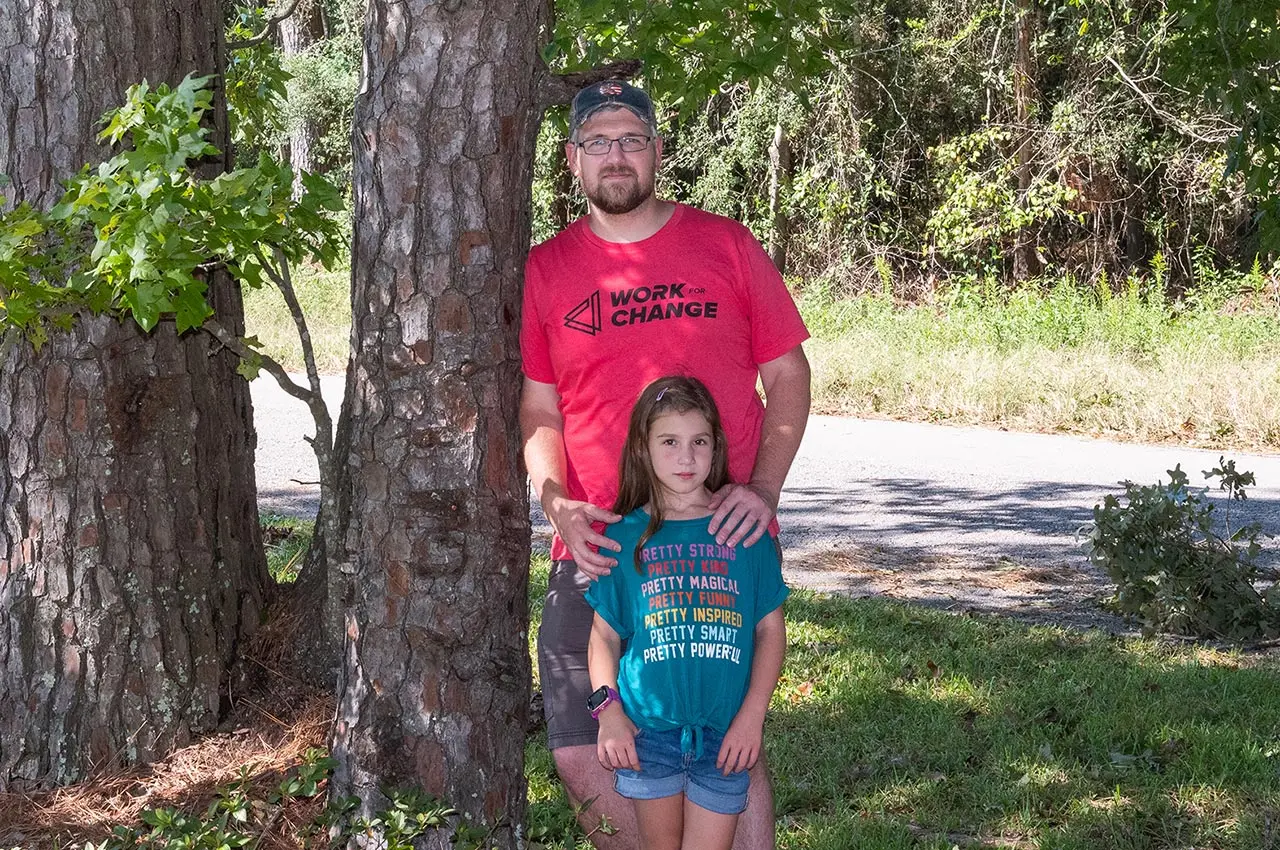
At around 6.50am, a train was heading north-east through Vidor into the shooting light – a hunting term for the dawn light that illuminates a rifle scope just enough to spot your prey. As the train ran parallel to a section of the Old Highway 90, the engineer saw someone lying face-down and motionless on the tracks. He blew the horn and slammed on the brakes but couldn’t slow down in time. The train hit Thomas.
A preliminary autopsy report showed that Thomas had sustained brain injuries and a broken neck. Within two days, the Vidor police had ruled out the possibility of foul play. There were no knife or bullet wounds. “It was just a tragedy,” David Shows, Vidor’s police chief at the time, told a local news station. “You know, he’s walking home, he either stumbles or lays down on the tracks, gets comfortable, goes to sleep, or he fell and hit his head and was unconscious.”
Thomas’s friends and family don’t believe this. “Take a nap on the tracks? Matt wasn’t stupid,” Zayne Simmons, one of Thomas’s closest friends, told me. He was found a mile from home. If he was tired, surely he would have managed to drag himself back. He hadn’t even drunk that much: a toxicology report showed that he was under the legal limit (it also found trace amounts of amphetamines). And Thomas had always been afraid of trains, according to his mother and brother: he wouldn’t go near the tracks unless he really had to.
The police never established where Thomas was between 3.30am, when he made his final phone call and 7am, when the train hit him.
They even organised a Christmas sale at a local petrol station that included a visit from Klana Klaus
Among those close to Thomas, another explanation emerged. His friends recounted how, earlier that autumn, Thomas was hanging out with some other football players when a group of men from the Compound drove by, looking to settle a score with one of Thomas’s friends.
A fence separated Thomas’s friends from the Compound gang. Thomas wandered over and started talking to them. A friend who was there says one of the Compound men called Thomas a “n----r” and flexed his biceps, showing off an extremist tattoo. “You know what f---ing town you’re in,” the man said to Thomas, according to the friend, and insinuated that he’d be back to deal with Thomas. The stand-off ended when the police arrived. Two weeks later, Thomas was dead.
Thomas’s family attempted to pursue its own investigation after the police wrote off his death as an accident. Shows told me that “they’re barking up the wrong tree”. But they followed up a number of leads. “We had names and we had a story that made sense, just from people coming to us and confiding in us about what they had heard or what they knew,” Thomas’s brother Mike told me.
Thomas’s stepfather, who was well-connected in Vidor, learned of a voicemail that someone linked to a white-supremacist gang had reportedly left for another associate: “We put him on the tracks and left him there.” Thomas’s stepfather told the police about this, and even brought the person who said they’d heard the message to the station, but the police didn’t follow up.
Klan members offered children $50 to beat up their black neighbours
There are also rumours among Thomas’s friends that a surveillance video captured at a convenience store that evening showed Thomas getting into an argument with a group, one of whom appears to be the man who threatened Thomas weeks earlier. The Vidor police files don’t mention this. Eventually someone who knew this man felt that she could no longer keep quiet. She told Thomas’s family that she’d overheard him bragging at a party that he was part of a group that had driven into Thomas with a vehicle and left him on the railway tracks.
Sometime after Thomas died, the man was sent to prison (his conviction had nothing to do with Thomas). He is now out of jail. When I spoke to him by phone, he said that the police had questioned him about Thomas’s death, but he was never formally interviewed. He said that he had never met Thomas and did not know who he was before he died. He didn’t remember picking a fight at a footballer’s house.
The man said he didn’t know what had happened to Thomas, but he was sure it had nothing to do with race. Vidor wasn’t racist and neither was he. Since getting out of jail he has covered up his white-supremacist tattoos. These symbols – and his association with a neo-Nazi gang – had nothing to do with racism, he said: “It was just something I was brought up in.” He hoped someone would come forward with information about Thomas’s death. But if it were couched as a racist crime, he said, “Everybody is going to shut up and go inside their house and they aren’t going to say nothing.”
Thomas was one of only two black students in his year. He represented Vidor’s hopes for racial co-existence. But as time went by, his classmates began to perceive his death as racially motivated because, as David Bolinger, one of his closest friends, said, “We all know what town we lived in.” Bolinger also realised that Vidor’s history prevented its institutions from confronting racist behaviour. People thought, “If we investigate this, we put ourselves 30 years back in the past. So let’s just [say], ‘Ok, he fell asleep on the tracks, we’re just going to go with it.’”
In the period of activism that followed the death of George Floyd, Jessie Fowler, another of Thomas’s friends, spied an opportunity to re-examine what happened. He put out a call on Facebook for new information and approached the police. A petition to reopen the case was posted on Change.org, a campaigning platform. This was a chance, Thomas’s brother said, for the people of Vidor to show that “they cared enough about this black citizen”.
Fowler called every day for two weeks before he was finally put through to a police detective. He told me that the detective initially seemed interested, particularly about Thomas’s stand-off with the Aryan Brotherhood, which wasn’t mentioned in the original police file. He could follow up leads, he said, but he couldn’t reopen the investigation unless new evidence emerged. Fowler gave him the phone numbers of 12 people to call. The detective talked to one of Thomas’s friends for hours. None of the other friends heard from him.
When I went to Vidor, I asked Rod Carroll, the police chief, what he thought about the circumstances of Thomas’s death. There was nothing particularly suspicious, he told me, after looking through the file (Carroll had not started working for the Vidor police when Thomas died). Thomas’s lungs were filled with blood, which implied, Carroll said, that he was alive at the moment the train hit him (this doesn’t rule out the possibility that he had been rendered unconscious). There are no plans for further investigation. The detective whom Fowler had spoken to had since been transferred to another department. He hadn’t even managed to add the notes from his follow-up interviews to Thomas’s file before he left.
Shows, the police chief at the time of Thomas’ death, bristled when I asked about the investigation. “I think we should let the young man rest in peace,” he said. Raking over cold embers would not “be good for the city of Vidor”. I asked him whether he considered the death of one of the only black citizens of Vidor to be race-related. “That never even crossed my mind,” he said.
For Thomas’s brother, such comments sum up Vidor’s predicament: “They’re not willing to face their past, so it’ll never get away from them.”
Noe became a local celebrity after the Black Lives Matter rally. People would come and express their appreciation, even if it was often tinged with pessimism. “I just want you to know I’m here for you and I support this 100%, man. But you gotta understand – it’s Vidor,” said one man who approached Noe in a shopping centre in Beaumont. Another woman asked Noe what she could do, practically, to support black Vidorians. “I was just like, ‘Call it out, put grandma’s face on a post and be like she uses the n-word heavy, make sure she’s known.’”
But Noe was also hurt by the invective on social media. “You are what is wrong with this community,” someone wrote on the Vidor Facebook group. “I will never believe you were ever treated like that here,” said another. He had invited Vidorians to face their town’s racism. Instead, many showed their indifference.
The story of racism in Vidor is one of absences and silence
Noe struggled to find work. Applications to Jack in the Box, Taco Bell and Walmart went nowhere. When potential employers asked about his involvement in the community, Noe soon realised he shouldn’t mention that he’d spoken at the protest. One interviewer told Noe he thought Black Lives Matter was a hate group. Noe slept on the couch in his friend’s trailer and put up with her boyfriend, who had warned him that he was “slightly homophobic” and “slightly racist”.
I asked Noe whether he would consider leaving Vidor. “No,” he replied defiantly. “Because that would let them win.” His mother is buried nearby and he’s already chosen his own plot next to her. His friends and family are here and he loves the gossip and “small-town vibes”.
The march had consequences for Malone, too. Before it, she had watched the video of George Floyd’s murder with her mother. “It was the most blatant example of racism I had ever seen in my life,” Malone remembers thinking. But her mother didn’t see it as racist. They had a furious argument. Malone had been employed by her mother as a carer for her severely disabled brother. Now, she was asked to leave the family home.
Malone was already living with her grandfather. He didn’t approve of her campaigning, but went to the march to protect her. When she returned home that evening he told her, “You have to find somewhere else to stay.” He accused Malone of having jeopardised his safety. Rioters could have burned down his house.
She sought refuge with an ex-boyfriend, but his abusive behaviour forced her to flee. Next she went to stay with some new friends in Louisiana. Within weeks, Malone tested positive for covid-19. She called her housemates from the testing site to tell them. By the time she returned to the house, they’d packed her belongings and ordered her to leave. In desperation Malone called her mother who, it transpired, also had covid. They agreed to put aside their differences. “We’re all sick and we all might die, so we might as well get over it,” was how she described it. Malone moved back in with her mother.
Despite the repeated evictions, Malone felt that the rally renewed her faith in her community. Many people sent her grateful messages. Black people told her they were no longer scared of going to Vidor. Those who knew the town only by reputation expressed their astonishment that she had pulled it off.
What are we going to memorialise? That we have a bad reputation?
When I met her at a restaurant she turned up in her Waffle House uniform, the fast-food outlet where she’d recently started working the graveyard shift. Two blonde plaits framed her rosy-cheeked face. “I’ve been through a lot,” Malone said, the memories bringing tears to her eyes. She dabbed at them to avoid smudging her make-up. Her actions had brought her a kind of clarity: “It showed who I thought were like me and who’s definitely not like me now. It rooted out the toxic people in my life.”
At the end of my first week in town, Hurricane Delta slammed into Vidor. Sheets of rain were blown horizontally. The storm thrashed traffic lights, which hung from their cables, and flayed tiles from rooftops.
The next morning Pastor Hollier and I drove through town as the sun burned vapour off the flooded ground. We passed bungalows with boarded-up windows and a few unlucky houses that had been crushed by trees. The mementoes of previous storms are still visible: temporary classrooms erected after Hurricane Harvey flooded the primary school three years before remain in use.
We pulled into Raymond Gould Park, where the Black Lives Matter march had been held the previous summer. The Klan had once rallied at this very spot. All over Vidor there are ghostly landmarks of a disturbing past, if you know where to look: the vacant lot on Main Street where the kkk once sold books; the spectral outline of the sundown sign. The story of racism in Vidor is one of absences and silence.
As we stood near a monument to war veterans, I asked Hollier what a memorial to Vidor’s past would look like. “A re-creation of that horrible sign?” he said, half jokingly. It was hard, he felt, to put his finger on a specific sin to repent. “What are we going to memorialise? That we have a bad reputation?”
In recent years a few former sundown towns have considered how to face up to their history: Glendale in California, Goshen in Indiana and La Crosse in Wisconsin have all passed town-council resolutions apologising for their history of racial exclusion.
For Vidor to do the same, its inhabitants would need to look history in the face. “How do you confront a problem that you don’t even recognise is a problem?” Hollier asked. “Like what is the finish line? What are we trying to do?”










